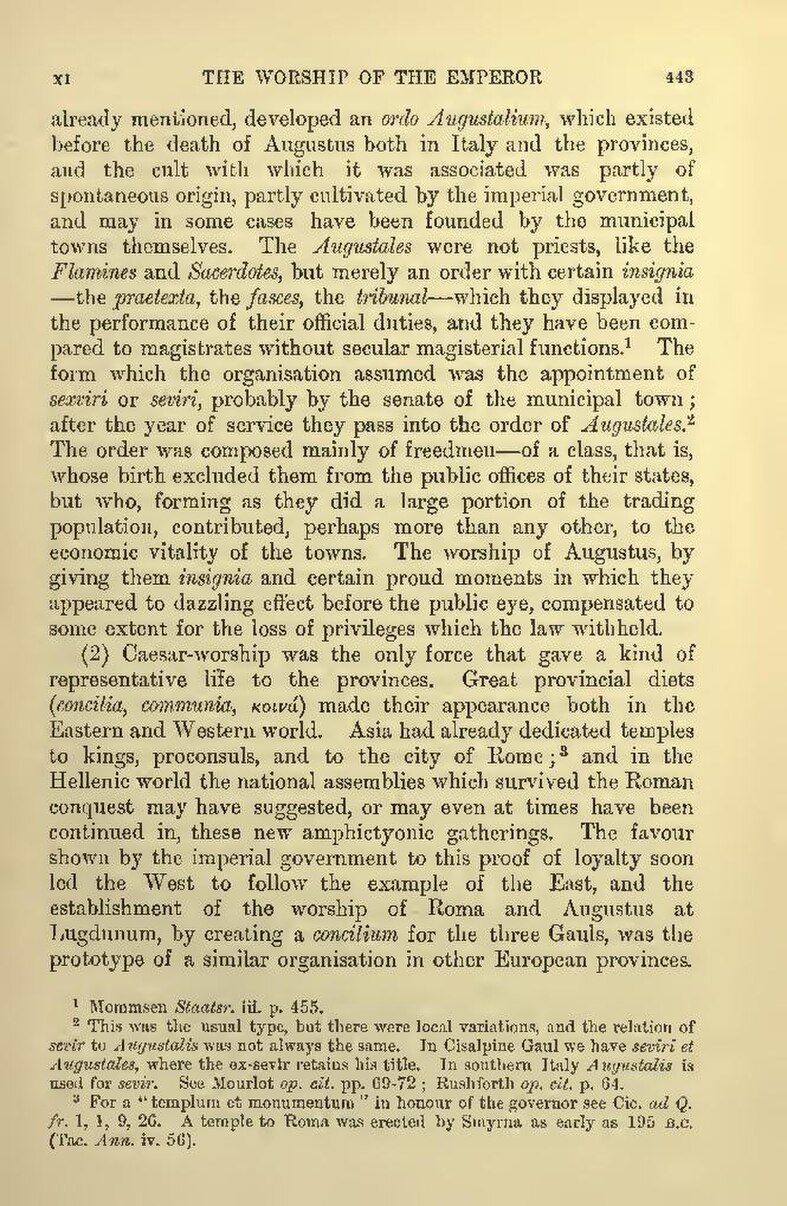already mentioned, developed an ordo Augustalium, which existed before the death of Augustus both in Italy and the provinces, and the cult with which it was associated was partly of spontaneous origin, partly cultivated by the imperial government, and may in some cases have been founded by the municipal towns themselves. The Augustales were not priests, like the Flamines and Sacerdotes, but merely an order with certain insignia—the praetexta, the fasces, the tribunal—which they displayed in the performance of their official duties, and they have been compared to magistrates without secular magisterial functions.[1] The form which the organisation assumed was the appointment of sexviri or seviri, probably by the senate of the municipal town; after the year of service they pass into the order of Augustales.[2] The order was composed mainly of freedmen—of a class, that is, whose birth excluded them from the public offices of their states, but who, forming as they did a large portion of the trading population, contributed, perhaps more than any other, to the economic vitality of the towns. The worship of Augustus, by giving them insignia and certain proud moments in which they appeared to dazzling effect before the public eye, compensated to some extent for the loss of privileges which the law withheld.
(2) Caesar-worship was the only force that gave a kind of representative life to the provinces. Great provincial diets (concilia, communia, [Greek: koina]) made their appearance both in the Eastern and Western world. Asia had already dedicated temples to kings, proconsuls, and to the city of Rome;[3] and in the Hellenic world the national assemblies which survived the Roman conquest may have suggested, or may even at times have been continued in, these new amphictyonic gatherings. The favour shown by the imperial government to this proof of loyalty soon led the West to follow the example of the East, and the establishment of the worship of Roma and Augustus at Lugdunum, by creating a concilium for the three Gauls, was the prototype of a similar organisation in other European provinces.
- ↑ Mommsen Staatsr. iii p. 455.
- ↑ This was the usual type, but there were local variations, and the relation of sevir to Augustalis was not always the same. In Cisalpine Gaul we have seviri et Augustales, where the ex-sevir retains his title. In southern Italy Augustalis is used for sevir. See Mourlot op. cit. pp. 69-72; Rushforth op. cit. p. 64.
- ↑ For a "templum et monumentum" in honour of the governor see Cic. ad Q. fr. l, 1, 9, 26. A temple to Roma was erected by Smyrna as early as 195 B.C. (Tac. Ann. iv. 56).
